#Breakthrough Energy Summit
Explore tagged Tumblr posts
Text
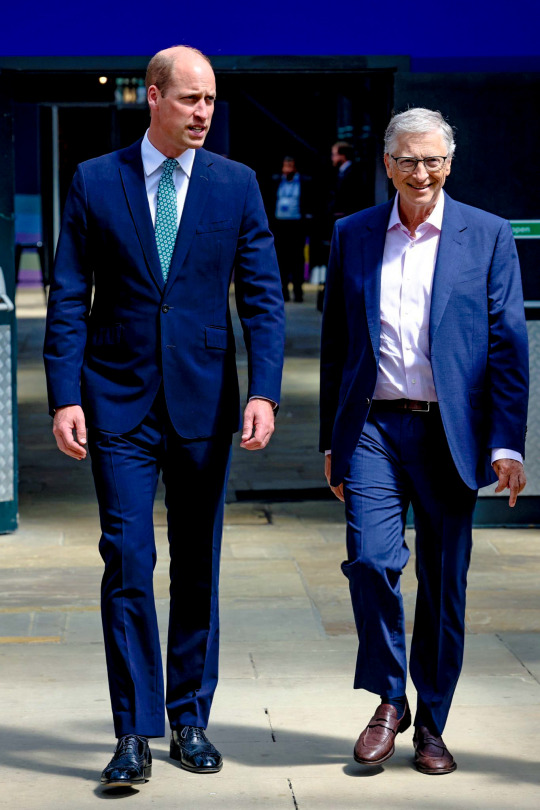
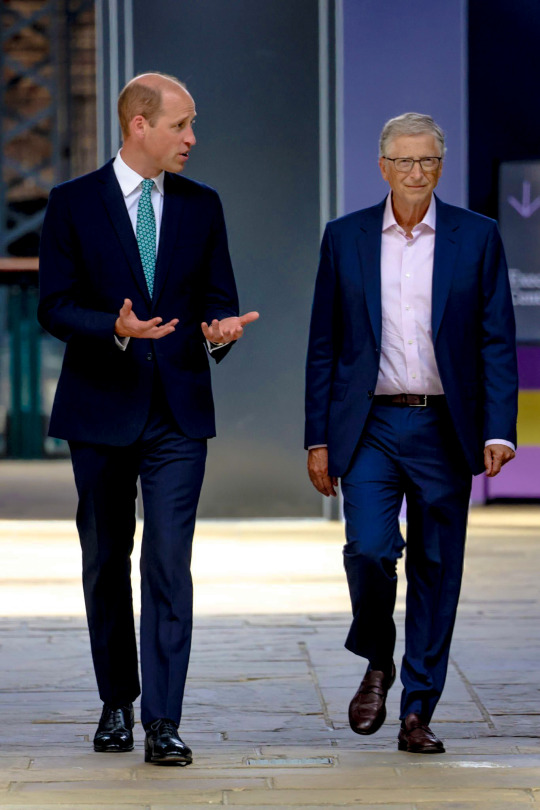


The Prince of Wales and Bill Gates, founder of Breakthrough Energy, attend the Breakthrough Energy Summit which brings together leaders in technology, policy, science, academia, and business to collaborate on innovative climate solutions, in London, England -June 27th 2024.
#prince william#prince of wales#british royal family#england#2024#june 2024#breakthrough energy summit#earthshot prize#earthshot prize 2024#bill gates#the wales#my edit
33 notes
·
View notes
Text
The Prince of Wales Attends Events During London Climate Action Week







Prince William, seen wearing a recycled tie, and Bill Gates, founder of Breakthrough Energy, take a tour of the Innovation Showcase, with Earthshot Winner and CEO and Co-Founder of Circ, Peter Majeranowski, at the Breakthrough Energy Summit on 27 June 2024 in London, England.
The Breakthrough Energy Summit brings together leaders in technology, policy, science, academia, and business to collaborate on innovative climate solutions.
Over 1,200 participants are expected to attend the 2024 Summit.
📸: Chris Jackson - WPA Pool / Getty Images
#Prince William#Prince of Wales#British Royal Family#Bill Gates#Breakthrough Energy#Breakthrough Energy Summit#Breakthrough Energy Summit 2024#London Climate Action Week#London Climate Action Week 2024#Peter Majeranowski#Circ#Chris Jackson#conservation#environment#climate change#innovative climate solutions#sustainability#protect our planet#save mother earth#research#product development#Earthshot Prize
9 notes
·
View notes
Text
#1. Global Politics#“2024 US Election”#“Russia Ukraine conflict”#“China Taiwan tensions”#“Israel Palestine ceasefire”#“NATO expansion”#2. Technology & Innovation#“AI advancements”#“Quantum computing breakthroughs”#“ChatGPT updates”#“5G technology”#“Electric vehicles news”#3. Climate & Environment#“Climate change summit”#“Carbon capture technology”#“Wildfires 2024”#“Renewable energy news”#“Green energy investments”#4. Business & Economy#“Stock market news”#“Global inflation rates”#“Cryptocurrency market trends”#“Tech IPOs 2024”#“Supply chain disruptions”#5. Health & Wellness#“COVID-19 variants”#“Mental health awareness”#“Vaccine development”#“Obesity treatment breakthroughs”#“Telemedicine growth”
3 notes
·
View notes
Text
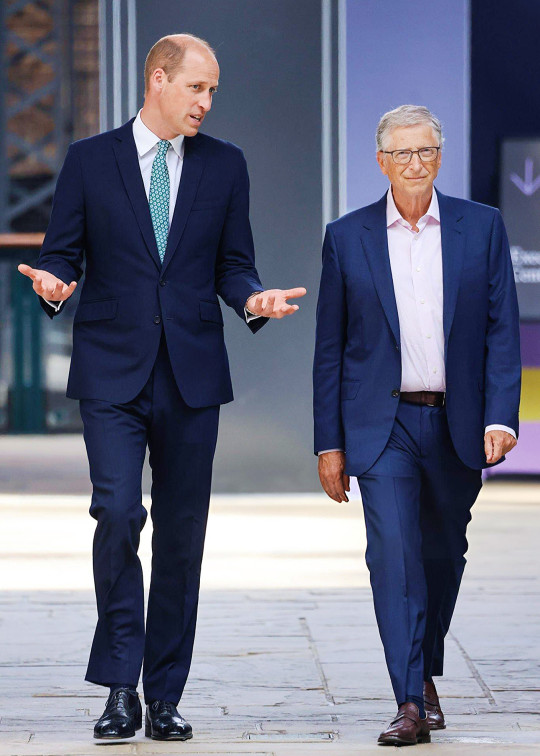
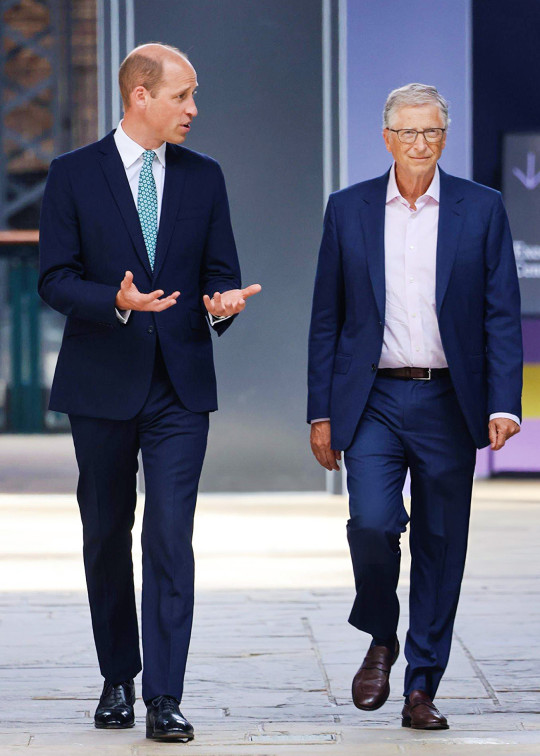
The Prince of Wales and Bill Gates, founder of Breakthrough Energy, took a tour of the Innovation Showcase at Breakthrough Energy Summit in London || 27 JUNE 2024
#british royal family#british royals#royalty#royals#brf#royal#british royalty#27062024#royaltyedit#royalty edit#prince of wales#the prince of wales#william prince of wales#prince william#EnergySummit24#william wales#will edit
77 notes
·
View notes
Text



British Royal Family - The Prince of Wales wearing a recycled tie takes a tour of the Innovation Showcase at the Breakthrough Energy Summit in London, England. (Photo by Chris Jackson) | June 27, 2024
#royaltyedit#theroyalsandi#prince of wales#prince william#prince william prince of wales#british royal family#my edit
62 notes
·
View notes
Text
“Commitments must quickly become cash.” Well, of course: cash talks, B.S. walks. No wait. it’s ‘B.S. talks and cash walks.” The South has been plundered for decades, and this is just another scam. They will get pennies on the dollar as kleptocrats along the way make the cash disappear into their own pockets. ⁃ Patrick Wood, Editor.
After two weeks of negotiations at the 29th annual United Nations “climate” summit, the UN and its member governments agreed to rules for a global “carbon market” led by the global body. The scheme will put a price on emissions of the gas of life, carbon dioxide (CO2), and allow carbon credits to be traded. UN bosses called it a “base to build on.”
The final deal, inked over the weekend, also saw Western governments pledge $1.3 trillion per year in “climate” wealth transfers by 2035. The money for Third World kleptocracies and climate profiteers will come from what remains of the middle class in the West. These reparations are to compensate for “loss and damage” supposedly caused by Western CO2, the UN claims.
Of that sum, about $300 billion annually will be in the form of grants and low-interest loans for “climate reparations,” starting immediately. That represents a tripling of previous pledges. The rest of the funding will come from government-backed “investments” and potential new international taxes on fuels or aviation in the years ahead.
Trading Emissions of CO2
The most important part of the deal involves the UN’s “carbon market” schemes. “This will be a game-changing tool to direct resources to the developing world and help us save up to $250 billion a year when implementing our climate plans,” explained COP29 boss Yalchin Rafiyev, deputy foreign minister for the Islamo-Marxist regime of Azerbaijan.
“When operational, these carbon markets will help countries implement their climate plans faster and cheaper, driving down emissions,” he continued. “We are a long way from halving emissions this decade. But wins on carbon markets here at COP29 will help us get back in that race.”
Deal a “Base on Which to Build”
UN Secretary-General António Guterres, former leader of the Socialist International, also said the deal was a good start. “I had hoped for a more ambitious outcome — on both finance and mitigation — to meet the great challenge we face. But this agreement provides a base on which to build,” he said in a statement after the deal was signed.
“It must be honored in full and on time,” continued Guterres, touting “multilateralism” (better known to Americans as globalism). “Commitments must quickly become cash. All countries must come together to ensure the top-end of this new goal is met.… I appeal to governments to see this agreement as a foundation — and build on it.”
UN climate boss Simon Stiell emphasized that the agreement is merely the next step on the road to even more grandiose grabs for money and power. “This is no time for victory laps,” said Stiell. “We need to set our sights and redouble our efforts on the road to [COP30 in the Brazilian city of] Belém.”
In his final statement on the summit, Islamo-Marxist dictator Ilham Aliyev boasted of success. “I consider the ‘Baku breakthrough’ as a triumph of multilateralism,” he said, celebrating the confab’s approval of rules for the UN’s “carbon markets” and wealth redistribution. “The COP29 is a turning point in the climate diplomacy.”
Will Trump Pull Out?
With Donald Trump’s reelection, COP29 attendees despaired about the looming departure of the U.S. government and its taxpayers’ money from the UN climate process. The president-elect has repeatedly ridiculed the man-made global-warming hypothesis as a “fraud,” a “scam,” and a “hoax.” He recently said destroying the scam must be a priority.
Some of Trump’s Cabinet nominees, including Energy Secretary Chris Wright, have echoed the president-elect’s hostility to climate alarmism. However, a delegation of five GOP congressmen arrived at COP29 to assure the “climate” negotiators that they all support parts of Biden’s “climate” agenda, including emissions reductions.
Former Trump climate advisor Dr. William Happer, a physicist from Princeton, called efforts to tax and regulate CO2 dangerous and stupid. In an interview with The New American, he said CO2 emissions should be encouraged. “CO2 is actually good for the world, so people ought to be encouraged to make more of it,” he said.
3 notes
·
View notes
Text



roundbreaking Achievement: NSF Daniel K. Inouye Solar Telescope Produces its First Magnetic Field Maps of the Sun’s Corona
Groundbreaking Achievement: NSF Daniel K. Inouye Solar Telescope Produces its First Magnetic Field Maps of the Sun’s Corona
The U.S. National Science Foundation (NSF) Daniel K. Inouye Solar Telescope, the world’s most powerful solar telescope, designed, built, and operated by the NSF National Solar Observatory (NSO), achieved a major breakthrough in solar physics by directly mapping the strength of the magnetic field in the solar corona, the outer part of the solar atmosphere that can be seen during a total eclipse. This breakthrough promises to enhance our understanding of space weather and its impact on Earth’s technology-dependent society.
The Corona: The Launch Pad of Space Weather
The Sun’s magnetic field generates regions in the Sun’s atmosphere, often rooted by sunspots, that store vast amounts of energy that fuel explosive solar storms and drive space weather. The corona, the Sun’s outer atmosphere, is a superheated realm where these magnetic mysteries unfold. Mapping coronal magnetic fields is essential to understanding and predicting space weather – and to protect our technology in Earth and space.
Why It Matters
Earth’s magnetic field shields us from solar winds, protecting our atmosphere, and making life possible. However, the electromagnetic fields and energetic particles from extreme solar eruptions can disrupt satellites, power grids, and other systems we need in our increasingly technological society. Understanding these dynamic interactions, which change on timescales ranging from days to centuries, is crucial for safeguarding our infrastructure and current way of life.
Measuring the corona’s magnetic properties has long challenged astronomers and the limits of technology. Today, the Inouye Solar Telescope is the most advanced facility designed to study the corona, and has made a crucial first step in resolving these mysteries by producing its first coronal magnetic field maps – the most detailed to date.
Since the 1950s, solar physicists have mapped the magnetic fields on the Sun’s surface, providing valuable insights. However, maps of the magnetic field in the zones above the surface, like the corona, have long been sought as it is in these locations that solar storms originate. The Inouye, located near the summit of Maui’s Haleakalā in Hawai’i, now provides the capabilities to meet this critical need.
The Inouye has created its first detailed magnetic field maps of the solar corona using the Zeeman Effect, which measures magnetic properties by observing spectral line splitting. Spectral lines are distinct lines that appear at specific wavelengths in the electromagnetic spectrum, representing the light absorbed or emitted by atoms or molecules. These lines act like “fingerprints,” as they are unique to each atom or molecule, allowing scientists to identify the chemical composition and physical properties of celestial objects by looking at their spectra. When exposed to a magnetic field, like in the Sun, these lines split, which gives us an insight into the object’s magnetic properties. Previous attempts at detecting these signals, last reported two decades ago (Lin et al. 2004), lacked the detail and regularity needed for extensive scientific investigation. Today, the Inouye’s unmatched capabilities allow for detailed, regular studies of these crucial signals.
The U.S. National Science Foundation (NSF) Daniel K. Inouye Solar Telescope, the world’s most powerful solar telescope, operated by the NSF National Solar Observatory (NSO), achieved a major breakthrough in solar physics by successfully producing its first detailed maps of the Sun’s coronal magnetic fields. This milestone, led by NSO Associate Astronomer Dr. Tom Schad, was recently published in Science Advances, and promises to enhance our understanding of the Sun’s atmosphere and how its changing conditions lead to impacts on Earth’s technology-dependent society. The corona, or the Sun’s outer atmosphere, greatly influences solar winds and space weather events like solar flares and coronal mass ejections. However, the magnetic forces that drive these events and the corona are challenging to measure.
Technological Marvel
Typically, one can only view the Sun’s corona – a region one million times fainter than the solar disk – during a total solar eclipse, when most of the Sun’s light is blocked and Earth’s sky goes dark. The Inouye, however, uses a technique called coronagraphy to create artificial eclipses, allowing it to detect extremely faint polarized signals – a billion times fainter than the solar disk – highlighting its unparalleled sensitivity and solidifying its status as a unique window to our home star.
The Inouye accomplishes this with its Cryogenic Near-Infrared Spectropolarimeter (Cryo-NIRSP), one of the telescope’s primary instruments used to study the corona and map its magnetic fields. This instrument was designed and built by the University of Hawai‘i Institute for Astronomy.
Dr. Tom Schad’s Research
“The Inouye’s achievement in mapping the Sun’s coronal magnetic fields is a testament to the innovative design and capabilities of this trailblazing unique observatory,” said Tom Schad, scientist at NSO, and first author of the study. “This breakthrough promises to significantly enhance our understanding of the solar atmosphere and its influence on our solar system.”
Future Prospects
This milestone marks the beginning of a new era in solar physics. The Inouye’s success in mapping the Sun’s coronal magnetic fields reaffirms its vision and mission, and opens new frontiers in understanding the Sun’s influence on space weather.
“Just as detailed maps of the Earth’s surface and atmosphere have enabled more accurate weather prediction, this thrillingly complete map of the magnetic fields in the sun’s corona will help us better predict solar storms and space weather,” says Dr. Carrie Black, NSF program director for the NSO. “The invisible yet phenomenally powerful forces captured in this map will propel solar physics through the next century and beyond.”
Christoph Keller, NSO Director, remarks that “Mapping the strength of the magnetic field in the corona is a fundamental scientific breakthrough, not just for solar research, but for astronomy in general.” He anticipates that “This is the beginning of a new era where we will understand how the magnetic fields of stars affect planets, here in our own solar system and in the thousands of exoplanetary systems that we now know about.”
Ongoing and future studies will refine diagnostic tools and techniques, leading to deeper insights into the Sun’s magnetic environment and its impact on Earth and our solar system.
TOP IMAGE: The NSF Daniel K. Inouye Solar Telescope presents its first map of the solar coronal magnetic field signals as measured using the Zeeman Effect. The Zeeman Effect polarizes the coronal emission, which requires the advancements of the Inouye Solar Telescope to measure as its signals are only a few parts per billion of the Sun’s surface brightness. The background image identifies the region observed in detail by Inouye as imaged by NASA’s Solar Dynamics Observatory in ultraviolet light. Credit: NSF/NSO/AURA
CENTRE IMAGE: The NSF Daniel K. Inouye Solar Telescope presents its first map of the solar coronal magnetic field signals as measured using the Zeeman Effect. The Zeeman Effect polarizes the coronal emission, which requires the advancements of the Inouye Solar Telescope to measure as the signals are only a few parts per billion of the Sun’s surface brightness. Credit: NSF/NSO/AURA
LOWER IMAGE: The NSF Daniel K. Inouye Solar Telescope’s Cryo-NIRSP instrument charted the telescope’s first coronal magnetic field maps. Cryo-NIRSP operates in the near-infrared to reveal the faint corona. It maintains a cryogenically cooled environment to achieve the high sensitivity, precision, and stability required for advanced observations of the corona. (Designed and built by the University of Hawai‘i Institute for Astronomy). Credit: NSF/NSO/AURA
3 notes
·
View notes
Text
COP28 was more than a summit for African nations acutely vulnerable to climate disasters despite being the least responsible for carbon pollution. Africans hoped it could be a pivotal moment where the world’s climate crisis would be confronted head-on.
That hope was almost dashed entirely but salvaged at the last minute. Early on in the negotiations to draft the final text, instead of agreeing on a fossil fuel phasedown deal, a historic commitment that would have lit the path out of Africa’s deepening climate despair, the COP28 draft agreement fell far short.
There have been important strides taken by the host nation. Before the summit, the United Arab Emirates had pledged to achieve net-zero carbon emissions by 2050, the first Middle Eastern country to do so. And the UAE’s COP28 presidency put forward an ambitious agenda, mobilizing nearly $84 billion in funding and launching a $30 billion catalytic fund, Altérra, to mobilize up to $250 billion for positive climate action – all in the first five days. This COP has also seen the World Bank increase its commitment by an additional $9 billion annually for climate projects—not to mention $22.6 billion toward climate action provided by multilateral development banks on top of that. And the loss and damage fund, so far raising more than $700 million, was a breakthrough.
But given the scale of the crisis, this is not nearly enough. For African nations, the stakes have never been higher. The relentless march of climate change threatens to render large areas of our land uninhabitable within mere decades—not to mention potentially unleashing a massive wave of climate refugees toward the West.
That’s why it was so disconcerting that OPEC heavyweights like Saudi Arabia, along with major economies including China and India, had ruled out calls for a fossil fuel phasedown, let alone a phaseout. Indeed, China and Russia shielded coal—the dirtiest of fuels—from criticism.
And how exactly were these nations justifying their refusal to curb emissions? In the guise of supporting the global south, they claimed that curbing fossil fuel production is detrimental to economies that rely heavily on it, as many African nations do.
Yet they ignored the catastrophic impact of business-as-usual fossil fuel exploitation, which is a lethal blow to the goal of limiting global warming to 1.5 degrees Celsius and a veritable death sentence for our countries. Exceeding 1.5 degrees would be disastrous for Africa, which produces the lowest per-capita emissions out of all continents. If nothing changes, approximately 250 million people in Africa could experience high water stress by 2030 due to climate change, impacting water availability for drinking, agriculture, and industry.
Africa’s hopes were about to be dashed on the rocks of political and economic self-interest. Yes, our economies are intertwined with fossil fuels, but the answer is not reckless continuation of fossil fuel production. The solution lies in a just and equitable transition to clean energy, underpinned by significant climate financing support from wealthier, industrialized nations. Without this, the idea of a fair transition simply does not hold up. Which is why African countries themselves said that they have no choice but to use fossil fuels if rich, industrialized nations refuse to provide funding for their green transition.
Saudi Arabia, India, and China had an opportunity to demonstrate that they are not stuck in the past but are instead ready to embrace the future. That means grappling constructively with the recognition that to retain a safe climate, the world must phase down fossil fuels. Doing so would be consistent with the fact that China and India are, respectively, the world’s first and third top renewable energy producers, with Saudi Arabia picking up the pace this year.
But it’s not just the major oil producers that almost derailed COP28 at the last hour. It’s also the United States and Europe that, despite ramping up their rhetoric in support of a fossil fuel phaseout, have failed to facilitate the climate finance needed to actually make it feasible.
Their calls thus left a sour taste for many African delegates. Many of us had experienced a sense of palpable hope around this critical issue when COP President Sultan Ahmed al-Jaber met with Kenyan President William Ruto during the Africa Climate Summit, where they agreed to support private-sector engagement in climate finance. To kick-start the initiative, the UAE invested over $13 billion to catalyze renewable energy projects across Africa.
In contrast, the failure of the U.S., U.K., and EU to back up their fossil fuel phaseout rhetoric with tangible mechanisms to make it financially viable—especially for the world’s developing nations—has alarmed many African leaders who feel we are being told we can have nothing: no fossil fuels for development, and no finance for a green transition . Without the financing to support a crash program in energy transformation, leaving fossil fuels in the ground would be a recipe to collapse into poverty.
Ultimately, without a drastic reduction in global fossil fuel production, Africa will continue suffering from escalating extreme weather events and natural disasters, leading to a greater need for funds to be directed toward climate disaster response and recovery, rather than proactive mitigation and adaptation efforts.
That is why the final COP28 agreement brokered by the UAE represents such a significant breakthrough. For the first time in history, we have a global climate agreement that formally recognizes the crucial significance of systematically reducing oil, gas, and coal use by incorporating the language of “transitioning away from fossil fuels in energy systems.” That such an agreement was signed off by 198 countries was extraordinary. That it was the UAE, the seventh-largest oil producer in the world, that managed to bring the world’s biggest oil producers—including Saudi Arabia, Iraq, China, and Russia—onto the side of recognizing this transition seemed surprising but revealed that they needed one of their own to broker this stunning compromise.
There’s still much work to do. We lack a mechanism to unlock the trillions of dollars of finance necessary to back such a huge and complex transition. The richest, most industrialized nations that have watered down their financial commitments at every opportunity were eagerly pointing the finger—but it is they who have refused to put their money where their mouths are.
Ultimately, this is the first COP that has managed to rally 198 world governments behind a vision of a world after fossil fuels, backed by a goal of tripling renewable energy and doubling energy efficiency by 2030. That goal is enough to tackle up to three-quarters of the emissions reductions required by that year to avoid dangerous climate change.
There’s no avoiding the fact that global energy markets will receive an unmistakable message from this declaration: The future is renewable, and the age of fossil fuels will soon be behind us.
2 notes
·
View notes
Text
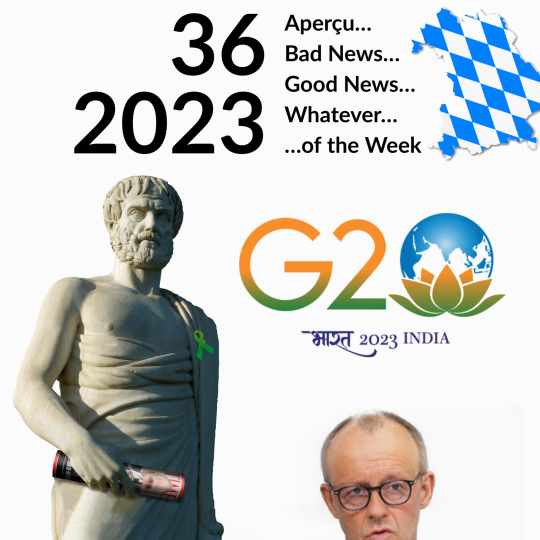
2023 / 36
Aperçu of the Week:
“Keep pushing!”
(Literally every Formula 1 team principal over radio)
Bad News of the Week:
"Opposition is crap" is what Franz Müntefering, the legendary party leader of the German Social Democrats, once said. He may be right. But that should in no way justify the fact that some opposition politicians limit their political positioning to just that: opposition. In other words, being against. Against everything the incumbent government does. Basically. But that is precisely what Friedrich Merz, head of the largest opposition party in the Bundestag, the conservative Christian Democratic Union (CDU), is doing.
As a reminder, Merz was fired by Angela Merkel at the time. He earned millions at Blackrock and thought he was in heaven - on his third attempt and after almost 20 years of political abstinence - when he finally became head of his oh-so-beloved party. But the 20 years have not been kind to him. Sometimes it seems as if he has been on another star. His catchphrase at beer tent speeches is "Kreuzberg is not Germany - you are Germany!" He is usually applauded for this.
You have to know that Kreuzberg is a district in Berlin that was very colorful for decades. Many peoples, many languages, many cultures, many religions. Beautiful, actually. But for Merz and people like him, the epitome of non-German. And then also woke - where you can order your cappuccino with almond milk, families can have two mothers or two fathers, and there's no one named Friedrich in kindergarten. So for a stick conservative, it's hell on earth. And for the political opponent (i.e. the Greens and everyone to the left of the CDU - in other words, everyone), the home of the ideologically lost.
Merz is wrong in two respects. For one thing, even Kreuzberg is gentrified these days. Investment bankers like him live in the barely affordable old buildings. And there are far more SUVs on the street than rickshaws. So the image of a parallel society outside the "usual norms" no longer holds water. On the other hand, we now live in the 21st century. In which "Who's afraid of the bogeyman?" is no longer played in the playgrounds and everyone knows that the vegetables at Tarek's or Giorgios' on the corner are better than those in the supermarket. So Merz has disqualified himself with his Kreuzberg bashing. Once again. My hope is that this will slowly get around to his clientele...
Good News of the Week:
At the latest when it became clear that China's head of state Xi Jinping would not be attending, the G20 summit in India looked like a flop. And then intermediate shades - such as whether the host would call itself Bharat instead of India - seemed to dominate. So a pure show event with pretty pictures for the evening news and political experts mainly analyzing what is not happening? No, far from it. India achieved many small breakthroughs and even three major ones that were not expected.
First, Prime Minister Narendra Modi and his Sherpas succeeded in issuing an official final declaration that was supported by all 20 states. Which seemed unlikely with Russia and the U.S. at one table. Even if the Russian war of aggression against Ukraine is not mentioned by name, the use of brutal force is condemned. An "impressive diplomatic achievement," as Die Tagesschau writes. "The host saved a presidency that was threatened with failure."
Then a gigantic infrastructure project was launched that clearly positions itself against China's "New Silk Road." At this point, at the latest, Jinping might have regretted not coming. India, the Middle East - including Israel! - and Europe are to be better connected with the help of the United States - with rail tracks, hydrogen pipelines and power lines for renewable energies. Apparently a plan to be taken seriously. Because Italy's Prime Minister Giorgia Meloni immediately took the opportunity to announce in New Delhi that her country (the only participant so far from the European Union) was withdrawing from the partnership program with China.
And finally, the G20 effectively became the G21. For the "African Union" was welcomed as a new member on the very first day. The maltreated continent is thus given a voice at the table where the fate of humanity is decided. The bottom line is that one thing is also clear after this summit: there are more and more significant players whose self-confidence is growing. The world is becoming more multipolar. And that is a good thing.
Personal happy moment of the week:
Last week I was having a lot of happy moments. Bavarian moments with a Canadian guest to be precise. It's always nice to be able to introduce someone to your region, culture, cuisine, language, country, city, etc. If this is well received and appreciated, you are happy that you are privileged to live here. And even things that are commonplace for you start to shine again. Bella Bavaria!
I couldn't care less...
...that the Kremlin's United Russia party was declared the winner in sham elections in the Russian-occupied territories of eastern Ukraine. Key word of this statement: sham elections.
As I write this...
...everything in Germany revolves around the ball. First, on Sunday, the German men's basketball team won the world championship in Manila in a complete surprise - yes, (also) against the USA. And my second home country Canada won the bronze medal - yes, against the USA. Then the German soccer federation fired national coach Hansi Flick for losing a test match against Japan on Saturday in a crash. After he got knocked out in the preliminary round against Japan at last year's World Cup and hadn't improved at all since. If Germany were not hosting the European Soccer Championship next year, they would even have to fear for qualification.
Post Scriptum
Germany's society is aging. That's why we need a good half million immigrants every year, even if some on the political right don't want to acknowledge that. However, we are facing international competition. In which we are doing anything but well. I just read a series of interviews in which expats tell why they gave Germany a chance (leading technology companies, public safety, moderate climate) but then left again (excessive bureaucracy, difficult language, lack of a welcoming culture). As long as no one at least speaks English at the foreigners' authorities, landlords bluntly prefer "Bio-Germans", foreign educational qualifications are not recognized and little Fatima is looked at askance in kindergarten, there will be no preservation of our prosperity.
#thoughts#aperçu#good news#bad news#news of the week#happy moments#politics#formula 1#opposition#cdu#friedrich merz#kreuzberg#g20#India#USA#bavaria#canada#ukraine#germany#basketball#soccer#migration#championship#silk road#elections#xi jinping#China#wokeness#pushing#kindergarten
2 notes
·
View notes
Text

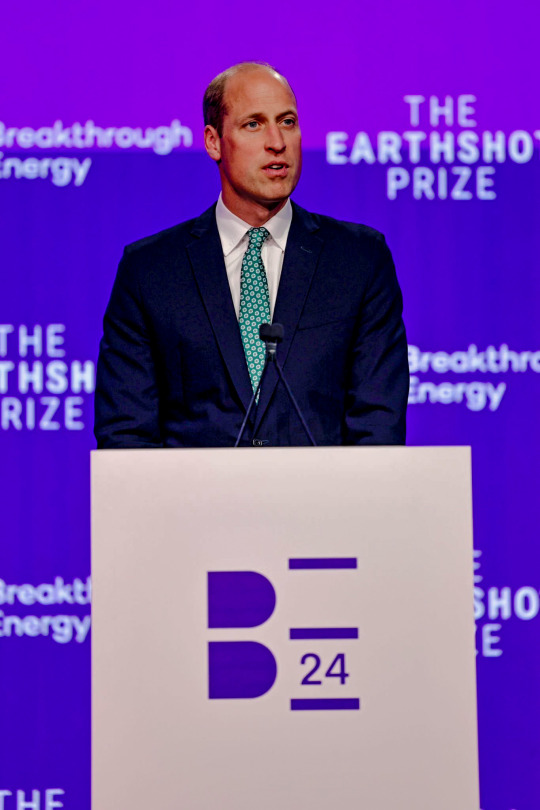
The Prince of Wales attends the Breakthrough Energy Summit which brings together leaders in technology, policy, science, academia, and business to collaborate on innovative climate solutions, in London, England -June 27th 2024.
#prince william#prince of wales#british royal family#england#2024#june 2024#earthshot prize#earthshot prize 2024#breakthrough energy summit#the wales#my edit
24 notes
·
View notes
Text
World News on Climate Change: What’s Happening Now?
Climate change continues to dominate the global agenda, and staying updated with the latest developments is crucial. At Presence News, we bring you the most important World news on climate change to help you understand what’s happening now and how it impacts the planet. This article covers recent events, key scientific findings, international efforts, and what the future may hold.
Recent Global Climate Events
In recent months, world news has been filled with reports of extreme weather events that many experts attribute to climate change. From devastating wildfires in Australia and California to unprecedented flooding in Europe and Asia, these incidents serve as urgent reminders of the consequences of a warming planet. Tracking this world news helps communities prepare and policymakers take action.
One of the most alarming stories in world news on climate change is the rapid melting of polar ice caps. Scientists report that the Arctic is warming twice as fast as the rest of the world, leading to record low ice levels. This phenomenon, widely covered in world news, is a stark indicator of the severity of climate change and its global reach.
Key Scientific Updates in World News
Scientific research continues to play a crucial role in understanding climate change. Recent world news highlights studies showing rising global temperatures, increased greenhouse gas emissions, and shifts in weather patterns. According to the latest reports, carbon dioxide levels have reached new highs, pushing global temperatures closer to dangerous thresholds.
These scientific insights featured prominently in world news stress the urgent need for international cooperation to reduce emissions and limit temperature rise. The Intergovernmental Panel on Climate Change (IPCC) has released updated findings that emphasize how immediate and large-scale actions can still help prevent the worst impacts of climate change.
International Efforts and Agreements
A significant part of world news on climate change revolves around global diplomatic efforts. The COP26 summit, held recently, attracted leaders worldwide to discuss and commit to stronger climate action. These meetings receive extensive coverage in world news due to their potential to shape the future of climate policies.
Countries are pledging to reduce their carbon footprints, invest in renewable energy, and promote sustainable development. Tracking this world news reveals varying levels of commitment and challenges, such as economic pressures and political disagreements, which influence the pace of progress.
Impact on Communities and Economies
Climate change is not just an environmental issue; it affects communities and economies globally. The world news frequently covers stories about how vulnerable populations are disproportionately impacted by climate events like droughts, storms, and heatwaves.
These stories in world news highlight the growing need for adaptation strategies, including better infrastructure, disaster preparedness, and social support systems. Economies dependent on agriculture and tourism are especially vulnerable, and the economic losses reported in world news underscore the urgency of addressing climate change comprehensively.
Technological Innovations in Climate Solutions
Amid the challenges, world news also shares inspiring stories of innovation. From breakthroughs in clean energy technologies to advancements in carbon capture and sustainable agriculture, these developments offer hope for a greener future.
Renewable energy projects, electric vehicles, and smart city designs frequently appear in world news as examples of how technology can contribute to reducing humanity’s carbon footprint. Keeping up with this world news is essential to understand the evolving landscape of climate solutions.
What’s Next in World News on Climate Change?
As climate change continues to affect every corner of the globe, world news remains a critical source of information. Upcoming international meetings, new scientific reports, and ongoing climate-related disasters will shape the narrative of future world news.
1 note
·
View note
Text
#1. Global Politics#“2024 US Election”#“Russia Ukraine conflict”#“China Taiwan tensions”#“Israel Palestine ceasefire”#“NATO expansion”#2. Technology & Innovation#“AI advancements”#“Quantum computing breakthroughs”#“ChatGPT updates”#“5G technology”#“Electric vehicles news”#3. Climate & Environment#“Climate change summit”#“Carbon capture technology”#“Wildfires 2024”#“Renewable energy news”#“Green energy investments”#4. Business & Economy#“Stock market news”#“Global inflation rates”#“Cryptocurrency market trends”#“Tech IPOs 2024”#“Supply chain disruptions”#5. Health & Wellness#“COVID-19 variants”#“Mental health awareness”#“Vaccine development”#“Obesity treatment breakthroughs”#“Telemedicine growth”
3 notes
·
View notes
Text
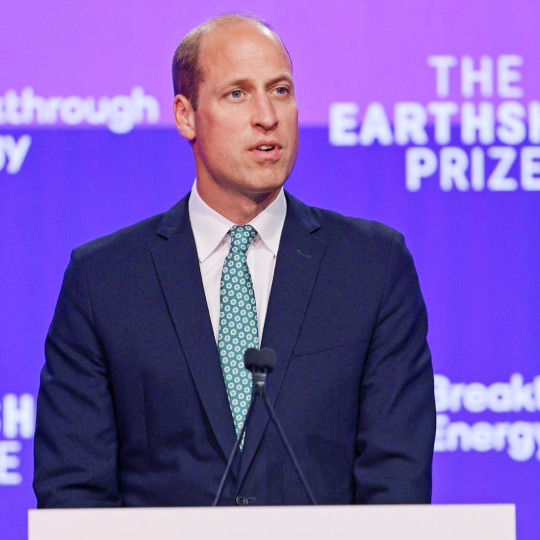


The Prince of Wales gives a speech at the Breakthrough Energy Summit in London || 27 JUNE 2024
#british royal family#british royals#royalty#royals#brf#royal#british royalty#prince of wales#the prince of wales#william wales#prince william#william prince of wales#royaltyedit#royalty edit#EnergySummit24#my edit#27062024#will edit
66 notes
·
View notes
Text
Unlock scaling progress at TC All Stage, and get $210 off for six extra days
T-minus 6 days till TechCrunch All Stage ticket costs rise. From now till June 22 at 11:59 p.m. PT, founders save $210 and buyers save $200 on passes. Are you able to push your startup to the following stage? Or are you an investor trying to again the following massive breakthrough? Be a part of TC All Stage on July 15 at SoWa Energy Station in Boston for the founder summit constructed for…
0 notes
Text
Iron & Steel Research Journal: 33 Years of Thought Leadership by SERC
In a world driven by innovation, infrastructure, and industrial sustainability, one sector continues to play a foundational role — Iron & Steel. Behind the scenes of this ever-evolving industry is a publication that has chronicled its journey for over three decades: the Iron & Steel Research Journal, known widely as Steel Scenario, published by the Spark Economy Research Centre (SERC).
From thought leadership to data-backed insights, this journal has become a must-read for professionals, researchers, and policymakers who shape the global iron and steel ecosystem.
What is Steel Scenario?
Since its inception in July 1991, Steel Scenario has been more than just a technical journal — it’s a strategic knowledge platform. Initially a quarterly publication, it evolved into a monthly issue in 2011, keeping pace with the dynamic shifts in global and Indian metallurgy, engineering, and allied sectors.
It offers comprehensive coverage of:
Iron & steel production trends
Policy and regulatory updates
Technological innovation in metallurgy
Market intelligence and trade data
Sustainability and environmental strategies
Case studies from steel plants and downstream users
Why Iron & Steel Research Still Matters
Despite the rise of digital technologies and green materials, iron and steel remain irreplaceable in infrastructure, manufacturing, energy, and transportation. The sector is now rapidly adapting to:
Hydrogen-based steelmaking
Carbon capture innovations
Digital twins and process automation
Energy-efficient furnaces
Circular economy in metals recycling
The Iron & Steel Research Journal plays a key role in documenting, analyzing, and amplifying these breakthroughs to a global audience.
Who Reads Steel Scenario?
SERC’s readership spans the full length of the value chain. Whether you’re a scientist in a metallurgical lab or a policymaker shaping the steel sector’s roadmap, this journal provides essential content.
Regular readers include:
Integrated steel plants and mini mills
Steel re-rollers and foundries
Research institutions and academic bodies
Industrial consultants and EPC firms
Global trade houses and exporters
Government departments and regulatory bodies
Associations in mining, refractories, and metals
Notably, it also reaches Central and State Ministers, and key Chambers of Commerce & Industry across India and abroad.
Featured Sections
Each monthly issue includes:
Editorial Insights — Expert commentary on current challenges and future outlook
Research Articles — Peer-reviewed papers from scientists and technologists
Sector Watch — Industry data, production forecasts, policy updates
Innovation Focus — Spotlight on startups, green steel tech, and digital transformation
Event Coverage — Conferences, exhibitions, and summits from India and overseas
Why Subscribe or Collaborate?
By subscribing to Steel Scenario, you get:
✅ Credible, long-form content curated by industry experts ✅ Monthly updates that keep you ahead of trends ✅ Visibility among thought leaders and decision-makers ✅ Opportunities to publish, advertise, and collaborate ✅ A platform that connects B2B networks across geographies
If you’re in steel, metallurgy, construction, energy, or logistics — this is where your market begins and your knowledge grows.
About the Publisher — Spark Economy Research Centre (SERC)
Based in India, SERC is a pioneering think tank and publisher at the intersection of steel, economy, and industrial research. With its second journal, Industry Scenario (launched in 2021), SERC has extended its expertise to cover verticals like automotive, infrastructure, cement, and more.
Its strength lies in its deep industry connect, credibility, and mission to bridge academia, industry, and policy.
Final Word:
As the world shifts toward a sustainable and technologically empowered industrial future, staying informed is not an option — it’s a necessity.
Explore Steel Scenario, the official Iron & Steel Research Journal by SERC, and be a part of the narrative that builds nations, strengthens economies, and shapes tomorrow’s industry.
Subscribe. Contribute. Advertise. Lead.
1 note
·
View note